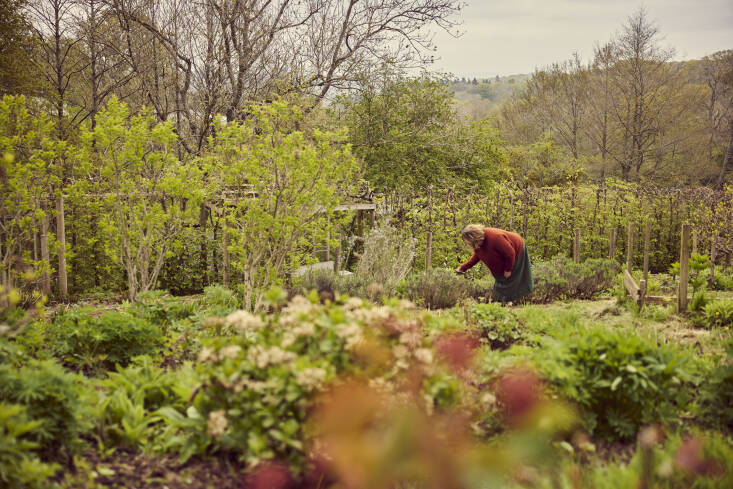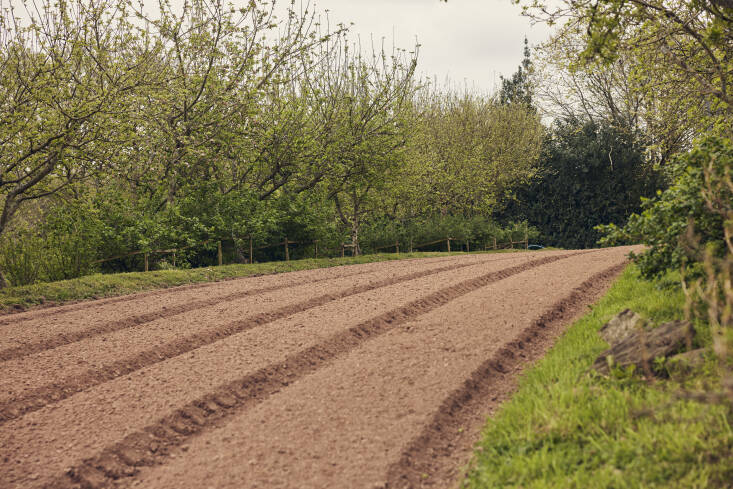When Jane Scotter bought Fern Verrow, her 16-acre farm in Herefordshire in the foothills of the Black Mountains, in 1996 she fell into biodynamic farming almost by accident: She was looking for a certification body and the biodynamic regime was, she says, just “a step or two further than organic.” Tasks from sowing to harvesting are carried out according to the biodynamic calendar (which is based on the phases of the moon and other astronomical events) and special preparations are applied to the land and plants at different times of the year.
Photography courtesy of Create Academy.

If, in the past, these elements sounded a little kooky to the uninitiated—cow manure is placed into cow horns and then buried under the soil, before months later being later stirred into water and applied to the farmland—they seem less so now, especially when Scotter’s ridiculously vibrant, larger-than-life vegetables and flowers come into view. “As modern people we have lost connection with that kind of thinking,” she says. “It makes a lot of sense to me and feels really good and I absolutely wouldn’t farm or grow any other way.” As she launches her first course with Create Academy we round up some of the farmer’s tips and biodynamic insights.

For the past eight years, Scotter has closely collaborated with Skye Gyngell, founder of London’s celebrated Spring restaurant and formerly the Michelin-star winning head chef at Petersham Nurseries. In their farm-to-table collaboration, produce is picked one day and served on a plate the next day. As a result, her farm is planned with military precision to maximize crops and productivity but also to produce the most beautiful varieties.

Crops are planned out on a spreadsheet that details yields, seeds, planting spaces, and harvesting times. Even for small scale growers ,she suggests doing the same so that you can calculate exactly how much space you’ll need. And if you only have a small space, she suggests thinking carefully about your plot and its aspect—don’t attempt to grow delicate leafy salads in scorching sun, grow what will flourish and what you will most enjoy eating. “Not everything will work,” says the farmer, who accepts failures as part of the process. “I never get put off by that—every season is good for something.”

Scotter is a big believer in relishing the beauty in everything that she grows, and curates growing areas to maximize the overall effect. She also chooses varieties of edibles for their looks—even if the taste isn’t perhaps as good as other varieties. Tomatoes are a case in point. The black tomato ‘Indigo Rose’ is, she says, “so outstandingly beautiful” that it deserves a spot in the greenhouse. Among her favorites for flavor are Jaune Flame, a deep orange tomato with an amazing sweet syrupiness, and Gardener’s Delight, which she describes as the very best outdoor tomato with great flavor and good size.


Reverence for the soil extends to the crops and where possible all elements are used. Brussel sprouts are grown for Christmas. but the top clump of leaves is pinched out in autumn providing an additional crop—the tops can be steamed or shredded and are prized by the chefs at Spring. (Organic seeds— Groninger sprouts in this instance—are sourced by Tamar Organics.) Similarly the cauliflower’s outer leaves, normally discarded, are, says Scotter, delicious cooked simply in butter or steamed.
Alongside edibles, the farm grows supersize flowers unlike anything you’ve ever seen—the farm sells bunches twice a week and supplies all of Spring’s flowers from April until October—and we are agog at the beauty and vitality of the farm’s tulips. Twenty thousand bulbs are planted in autumn; half are planted in outside beds and half under glass to extend the season. And they are treated as a commercial crop, so that the bulbs are composted each year and new bulbs planted to ensure the very best flowers.

See also:
- Landscaping 101: Biodynamics for the Edible Garden
- The Garden Decoder: What Does ‘Organic Gardening’ Really Mean?
- The Garden Decoder: What Is ‘Permaculture’?












Have a Question or Comment About This Post?
Join the conversation (0)